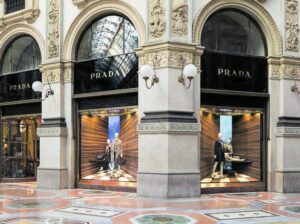People-Watching: A Tool of Discovery
by Gillie Schmidt-Quee
Florence was the first fashion capital of the world, and we began our stay with a trip to Palazzo Pitti, home to many royal families, namely, the Medici’s. Before the palace became the art museum it is today, it was the stage for the burgeoning “Made in Italy” brand. Although Milan is now synonymous with Italian fashion, and the Italian look, the brand began in Florence and was later moved to Milan, now the “fashion capital,” by Walter Albini. With this history as a backbone, I quickly began to understand how style works in a city like Florence: fashion separates the Italians from everyone else. My free day of exploration allowed me to observe Florence through fresh eyes, and it shocked me how quickly I was able to tune into this. With people-watching came some questions: how does style become integral to identity, and what separates fashion from clothing? In the globalized world we have today, inspiration and knowledge is readily available, and yet, not always achieved.
With my free day, came endless possibilities. Wandering the streets, I immediately felt a shift in culture from the other cities we have visited thus far: Florence is full of Americans. The shock of hearing American English on the streets was not the only clue, but I began to observe that I could tell where people were from simply from the clothing they wore. Prompted by an “assignment” to people watch (a favorite hobby of mine) once I began to purposely pay attention, the signs were everywhere. Although many American students and tourists were wearing clothes I would deem fashionable, or even fancy if I saw them on the streets in America, it felt off and almost forced in this effortless city. As we have explored through our courses, and I have observed thus far, there is a special, undeniable gracefulness of Italian fashion: a characteristic impossible to determine, and yet impossible to deny. The “Italian Look” is one of ultimate put-togetherness as defined in terms like “Sprezzatura,” alluding to the effortless and natural nature of these looks, and “bella figura” which illuminates the importance Italian culture has put on fashion. These characteristics became blatantly obvious to me as I sat on the steps of Piazza della Signoria, and later basked in the sun of the beautiful Boboli Gardens.
Italy has provided a constant bombardment of fashion. In each of the three cities we have visited thus far: Milan, Bologna, and now, Florence, clothing has been inescapable and nearly inseparable from the experience of the cities themselves. In Milan we hopped off the plane and were greeted with massive advertisements for brands like Dolce and Gabbana, welcoming us not only to Italy, but also to a world of glamor. In Bologna, the sprawling “vintage” market sporting hundreds of identical knockoffs deglamorized my previous vision of Italian Fashion. And, finally, arriving in Florence, the presence of designer brands in the same arena as the Duomo and Palazzo Vecchio placed these modern Italian giants on the same pedestal as Renaissance artists like Michaelangelo.


It is undeniable that fashion is a critical aspect of Italian nationality and identity, but why, and how can I tell even just by looking at someone?
The words for this difference are hard to find other than just reverting to a “vibe.” However, it became obvious there is a difference between clothing and fashion, and thus a difference between wearing and dressing. I would see a beautiful trench coat and jeans on a woman unmistakably Italian, and then a replica later on an American student here on exchange, but the latter just did not strike the same chord. What about Italy has made it the epitome of style? I was reminded of comments made by Italian designers, Marco Rambaldi and Francesca Liberatore, during our interviews in Bologna, who both claim that one does not inherit style, but instead grows into it. If this is true, then how do all Italians appear so fashionable? What about the culture cultivates fashion as a value? And how do I as an outsider recognize this without being allowed into the club of chicness? These questions all connect clothing explicitly to identity, and ask whether an outsider truly has the power to emulate the Italian look, and what about that look makes it so desirable for the rest of us?